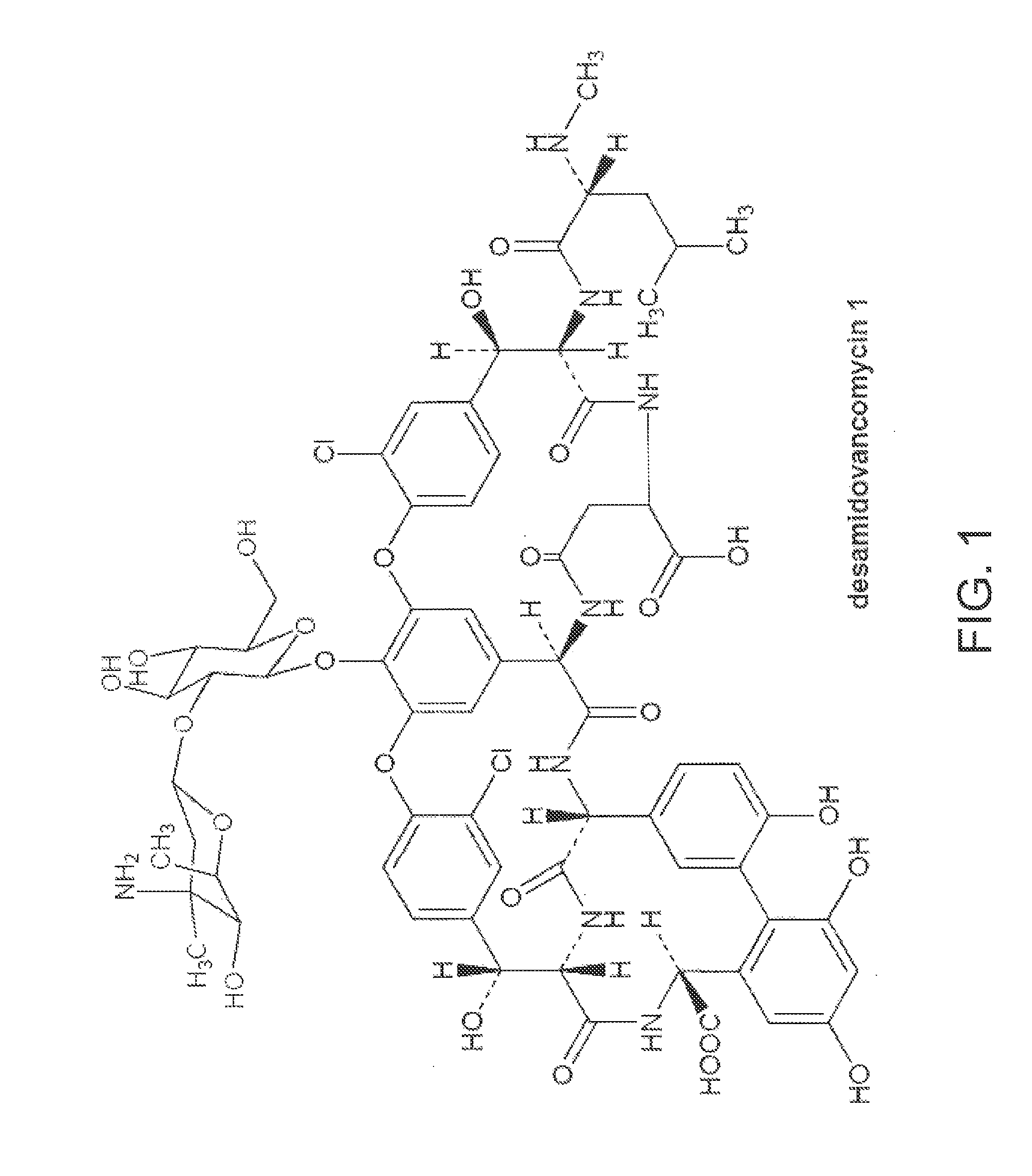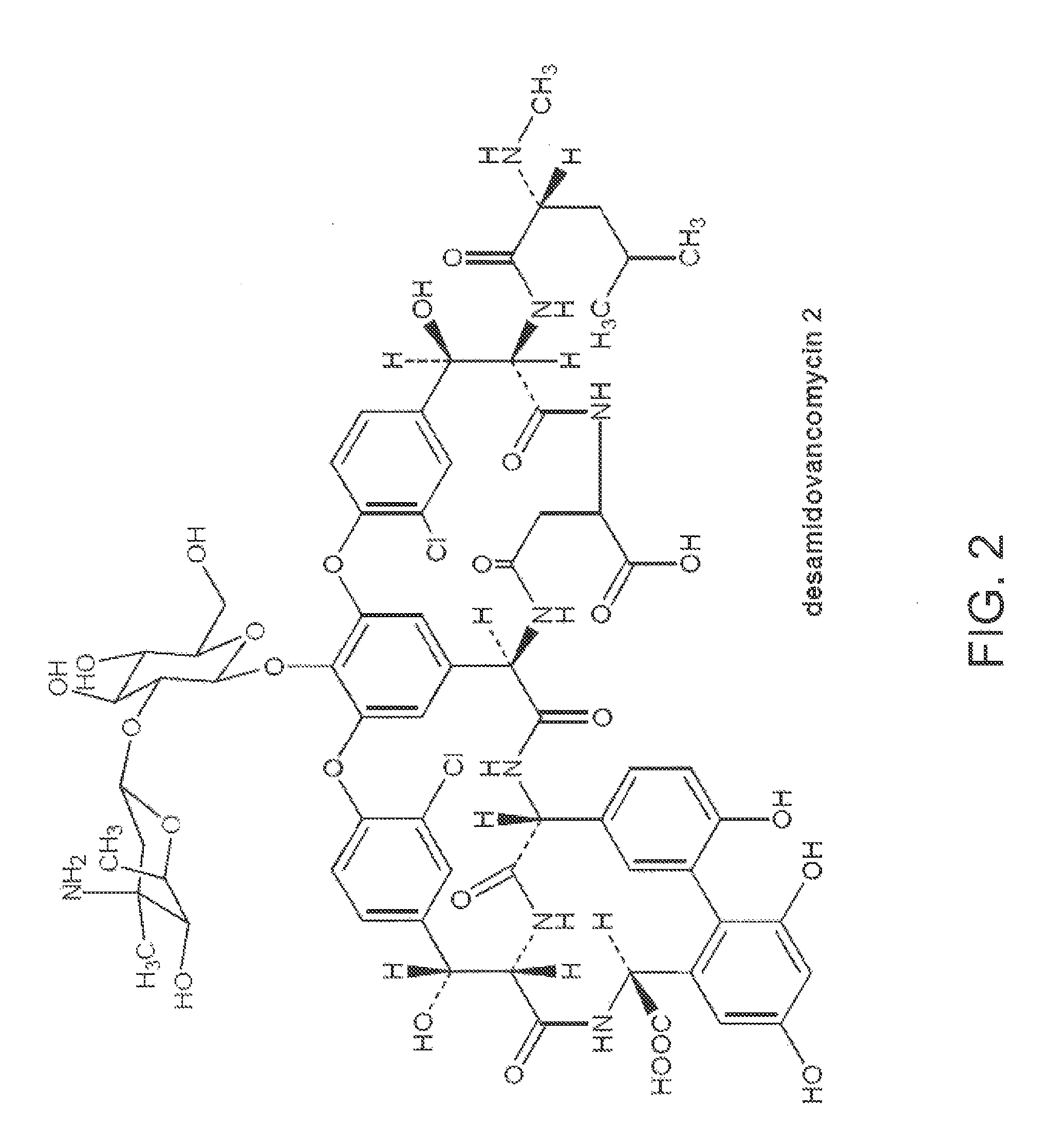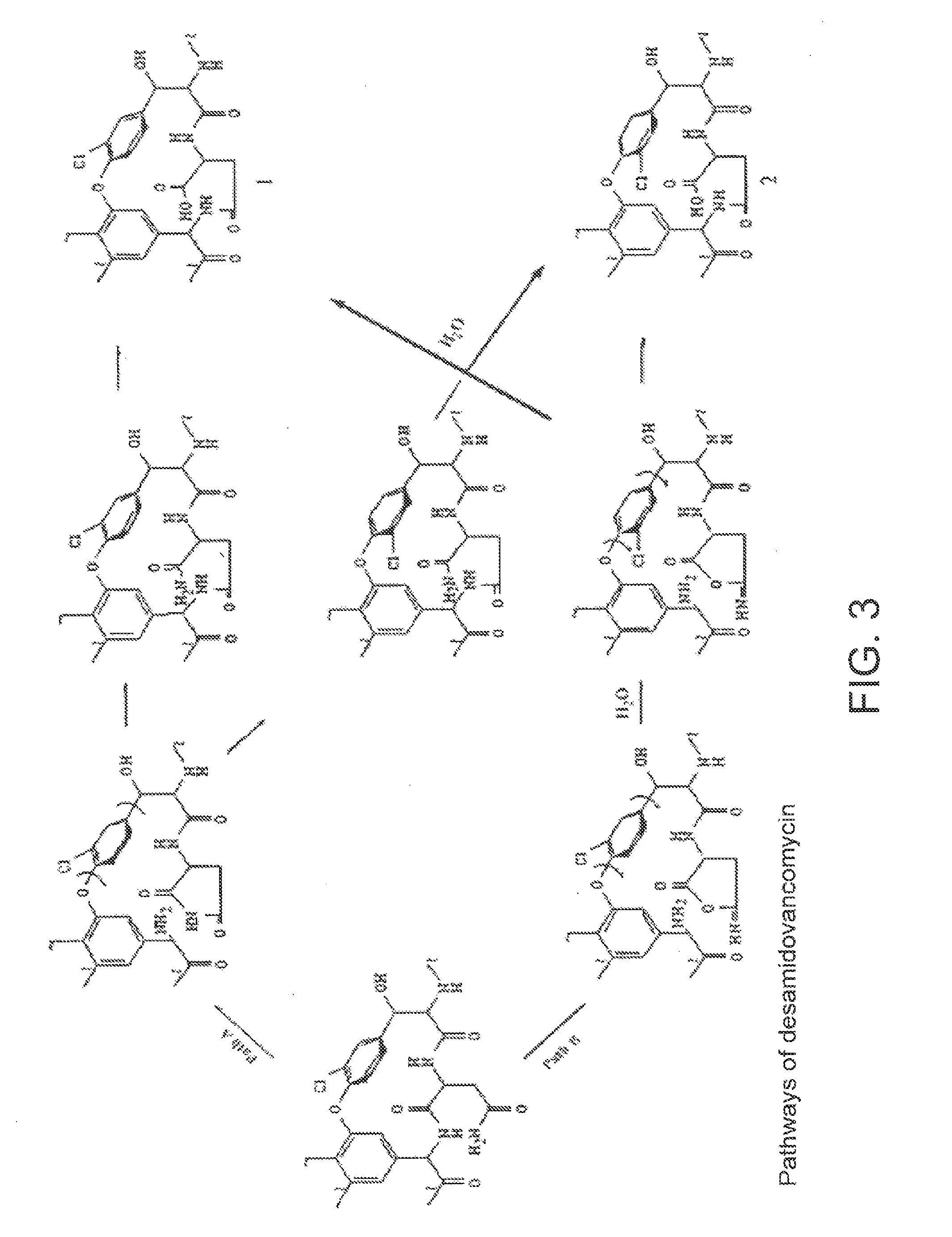Method and system for producing high purity vancomycin hydrochloride
a vancomycin hydrochloride and high purity technology, applied in the direction of pharmaceutical product form change, antibacterial agents, packaging goods types, etc., can solve the problems of contaminating slurry formation, decomposition and contamination of the final vancomycin product, etc., to achieve high purity, low impurity level, and high potency
- Summary
- Abstract
- Description
- Claims
- Application Information
AI Technical Summary
Benefits of technology
Problems solved by technology
Method used
Image
Examples
example 1
Stability Study of Vancomycin Concentrates with Different Excipients
[0100]To 900 mL of 25% vancomycin concentrate (batch No: 310121109; vancomycin B: 96.50%; 225 g of vancomycin in total), subdivided in nonuplicate, 100 mL each. To eight of them, added 5 g of trehalose, 5 g of mannitol, 5 g of glucose, 5 g of fructose, 5 g of glycine, 5 g of glutamine, 5 g of sorbose and 5 g of lactose, respectively, passed these eight solutions as well as the one without excipients through 0.22 μm filter, respectively, and stored the obtained filtrate at 2-8° C. in refrigerator. Observed clarity of the filtrate every 24 hours and the results are shown in Table 1.
[0101]
TABLE 1Clarity of vancomycin concentrate at 2-8° C. with different amounts of trehaloseSolutionSolutionSolutionSolutionAmount ofappearance afterappearance afterappearance afterappearance afterexcipient (g)24 hours48 hours72 hours96 hours0White particleWhite particleWhite particleColloidal,precipitateprecipitateprecipitatewithout fluid...
example 2
Effect of Different Trehalose Concentration on Stability of Vancomycin Concentrate
[0103]To 800 mL of 25% vancomycin concentrate (batch No: 310121109; vancomycin B: 96.50%; 200 g of vancomycin in total), subdivided in octuplicate, 100 mL (about 25 g of vancomycin) each.
[0104]To the eight portions, add 0 g, 1.25 g (5% of weight of vancomycin), 2.5 g (10% of weight of vancomycin), 3.75 g (15% of weight of vancomycin), 5 g (20% of weight of vancomycin), 6.25 g (25% of weight of vancomycin), 7.5 g (30% of weight of vancomycin) and 8.75 g (35% of weight of vancomycin) of trehalose, respectively, dissolved completely and filtered through 0.22 μm to get Filtrate A, B, C, D, E, F, G and H, respectively. Stored all the obtained filtrates at 2-8° C. in a refrigerator, and observed clarity of the filtrates every 24 hours. The results are presented in Table 2.
[0105]
TABLE 2Clarity of vancomycin concentrate at 2-8° C.with different amount of trehaloseSolutionSolutionSolutionSolutionSolutionSolutio...
example 3
Process Parameters Study on Spray Drying of Vancomycin Concentrate
[0107]Spray dryer: Buchi B-290.
[0108]Materials: vancomycin concentrate, batch No: 310121109; vancomycin B: 96.50%; Concentration: 20%.
[0109]Experiment process: in these embodiments, the spray drying was performed at three inlet temperatures of 170° C., 190° C. and 210° C., and for each inlet temperature, three outlet temperature ranges of 90-100° C., 100-110° C. and 110-120° C. were adopted, respectively.
[0110]For each embodiment, at the chosen inlet air temperature and the corresponding outlet air temperature by adjusting speed of feedstock pump, performed spray drying of 200 mL vancomycin concentrate, collected dry vancomycin powder and tested moisture, pH of 5% vancomycin solution, HPLC as well as OD of 10% vancomycin solution.
[0111]The batch numbers of spray dried vancomycin hydrochloride powder together with the corresponding inlet temperature and outlet temperature are listed as follows:
[0112]
InletOutletBatch. N...
PUM
| Property | Measurement | Unit |
|---|---|---|
| chromatographic purity | aaaaa | aaaaa |
| temperature | aaaaa | aaaaa |
| temperature | aaaaa | aaaaa |
Abstract
Description
Claims
Application Information
 Login to View More
Login to View More - R&D
- Intellectual Property
- Life Sciences
- Materials
- Tech Scout
- Unparalleled Data Quality
- Higher Quality Content
- 60% Fewer Hallucinations
Browse by: Latest US Patents, China's latest patents, Technical Efficacy Thesaurus, Application Domain, Technology Topic, Popular Technical Reports.
© 2025 PatSnap. All rights reserved.Legal|Privacy policy|Modern Slavery Act Transparency Statement|Sitemap|About US| Contact US: help@patsnap.com



